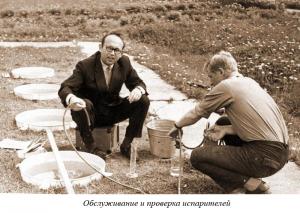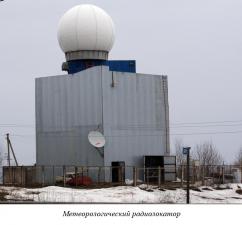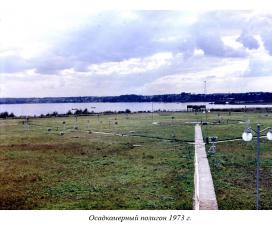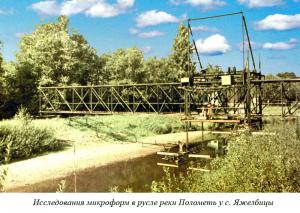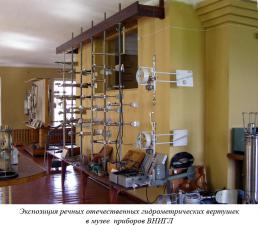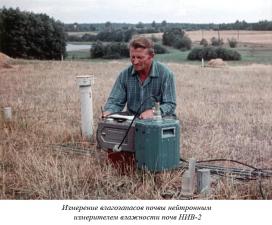Story
Valdai Runoff Station is one of the first field experimental bases in our country and abroad. It was created by the SHI in 1933 and later transformed into the Valdai Hydrological Research Laboratory (VHRL). Now the Valday branch of the FSBI “SHI” is a large center of experimental hydrological research that has received world fame.
Experimental studies on the Valdai Hydrological Research Laboratory were initiated by V.A. Uryvaev, and continued successfully by the A.N. Popov, then - A.P. Uryvaev (son of V.A. Uryaev’s brother). Subsequently, S.F. Fedorov and S.S. Marunich were the directors of the Valdai Hydrological Research Laboratory and the Valday branch of the SHI. Currently, the Valday branch of the SHI is headed by A.S. Marunich.Comprehensive experimental studies are conducted on runoff sites, experimental pools, special polygons and other objects. They cover almost all the links of the hydrological cycle in their mutual connection: flow regime, precipitation, snow cover and snowmelt, evaporation from the water surface and surface of various lands, water from the aeration zone, groundwater and many others. To study the formation of runoff and the influence of the underlying surface factors and anthropogenic factors on it, runoff sites have been created, where runoff conditions can be changed depending on the goals of the experiment. A full range of water-balance observations is carried out in experimental basins with different soil character, degree of forest cover, etc.
In order to improve the accuracy of precipitation measurements, taking into account their uneven distribution in space, in recent years, research has been launched with the help of meteorological radar and a specially created network consisting of 100 ground-based precipitation gauges. the directors of the Valdai Hydrological Research Laboratory and the Valday branch of the SHI. Currently, the Valday branch of the SHI is headed by A.S. Marunich.
A large complex of long-term experimental studies was carried out for many years under the guidance of S. F. Fedorov to study the effect of forests, deforestation and reforestation on the hydrometeorological regime and water flow of rivers. For this purpose, water balance observations were organized at a number of experimental basins and a special gradient installation in the Tayozhny log basin, where hydrometeorological observations are conducted at different heights. ng on the goals of the experiment. A full range of water-balance observations is carried out in experimental basins with different soil character, degree of forest cover, etc.
For more than 20 years, a unique experiment has been conducted at one of the experimental basins (Blue Gnilka) to study changes in water balance as reforestation has occurred.
Special polygons are designed to study evaporation from the water surface and land surface. Under the leadership of V.I. Kuznetsov, V.F. Pushkarev and A.R. Konstantinov, V.S. Golubev, and now N. A. Speranskaya, conducted studies of the evaporation process from land and water surface in order to develop methods for calculating evaporation with limited and no observational data.
In order to improve the accuracy of precipitation measurements, taking into account their uneven distribution in space, in recent years, research has been launched with the help of meteorological radar and a specially created network consisting of 100 ground-based precipitation gauges. the directors of the Valdai Hydrological Research Laboratory and the Valday branch of the SHI. Currently, the Valday branch of the SHI is headed by A.S. Marunich.
To study the channel processes and the regime of weighted and drawn sediments, a special channel station on the r. Polomot (p. Yazhelbitsy) with a unique mobile installation that allows you to measure the movement of sand ridges directly in the stream. Many years of work at this facility are performed by V.A. Vinogradov with a group of specialists.
The results of research carried out at the Valdai Experimental Base of the Institute allowed us to significantly deepen our understanding of the processes of runoff formation, especially in the primary hydrographic network, and other components of the water balance, channel processes and moisture dynamics in the soil, groundwater regime. Experimental studies made it possible for the first time to assess the accuracy of measurement of precipitation, snow cover, snowmelt, evaporation and other elements of the water balance, significantly improve the accuracy of their calculation when studying the water balance of river basins, lakes, reservoirs, reclaimed land and many others.


